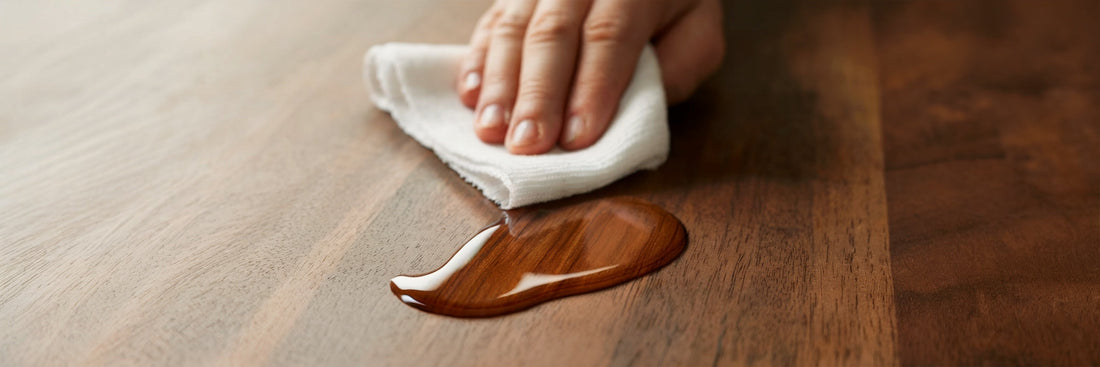
Caring for Wooden Cutting Boards
To ensure your hardwood cutting board lasts for years, proper care is essential. Here’s everything you need to know to keep your board looking good and performing like a pro.
Hand Wash Only
Never put your hardwood cutting board in the dishwasher. The high heat and moisture can warp and damage the wood. Instead, wash your board by hand using warm, soapy water. For best results, use a mild dish soap that won’t be too harsh on the wood. You can use a soft sponge or cloth, but avoid abrasive scrubbers that can scratch the surface. After washing, dry it immediately with a clean towel, then let it air-dry completely before storing or using again.
Deodorizing Tip: If your board starts to smell, especially after cutting foods like onions or garlic, you can deodorize it with natural ingredients. Sprinkle coarse salt or baking soda on the surface, rub it gently with a lemon half, and let it sit for a few minutes. Rinse with warm water, and your board should be fresh again. Lemon juice and salt also sanitize the board by reducing the number of microorganisms that may remain on the wood.
Avoid Soaking
Never leave your cutting board soaking in water. Wood is porous, and prolonged exposure to water can cause it to swell, warp, or even crack. After washing, always dry your board right away and make sure it’s completely dry before storing.
Oil and Wax: Your Board's Best Friends
Regular conditioning prevents the wood from drying out and cracking, keeping your board strong and resilient for years of use.
Food-Grade Mineral Oil
Pure food-grade mineral oil is your cutting board's foundation treatment. It’s tasteless, odorless, and colorless, and doesn't go rancid, so it’s safe for long-term wood care.
When to use: As your primary, regular conditioning treatment Application: Pour a small amount directly onto the surface (less than a tablespoon for small boards, up to two tablespoons for large ones). Use a clean cloth to rub the oil into the wood, coating the entire surface evenly, including sides and grooves. Let it soak in for several hours or overnight, then wipe away excess.
Food-Grade Board Wax or Conditioner
Board wax (often a blend of mineral oil and natural waxes like beeswax or carnauba) creates a protective barrier on the wood surface.
When to use: After mineral oil has been absorbed, or as a finishing treatment Benefits: Provides water resistance, enhances wood grain appearance, and extends time between treatments
Using Oil and Wax Together
(Note: These are affiliate links to recommended products. As an Amazon Associate, I earn from qualifying purchases at no additional cost to you.)
For optimal care, use this two-step approach:
- First: Apply mineral oil and let it fully absorb
- Second: Apply a thin layer of board wax for added protection
This combination gives you the deep conditioning of oil plus the surface protection of wax.
How Often: Oil your board 2-3 times monthly depending on use. Apply wax after every 2-3 oil treatments, or when the surface feels less water-resistant.
Store Vertically
Store your cutting board upright to ensure even drying and prevent moisture buildup. This allows air circulation around the entire board, reducing warping risk. Use a cutting board rack or lean it against the wall behind your counter.
Restore with Light Sanding
If your board develops deep scratches over time, light sanding can restore a smooth surface. Use fine-grit sandpaper (220 grit) and sand with the wood grain direction. After sanding, always reapply mineral oil to restore moisture and protection.
With proper care, your cutting board becomes more beautiful with age—developing character while serving your family for generations to come.
